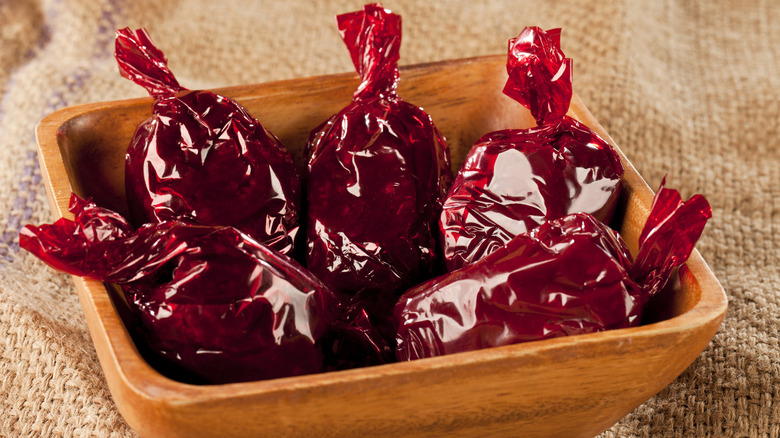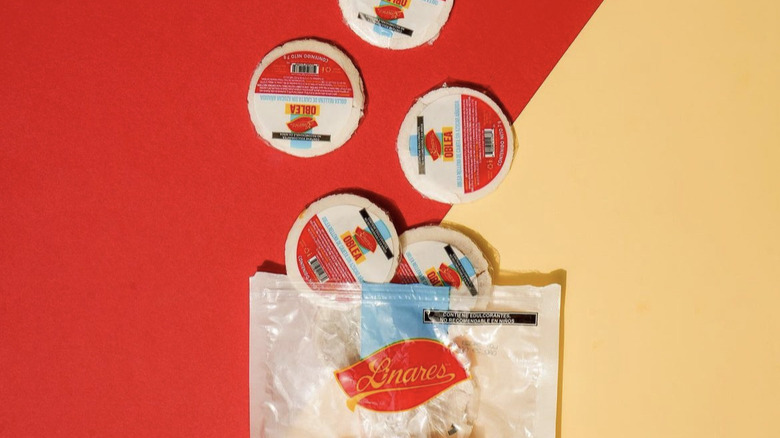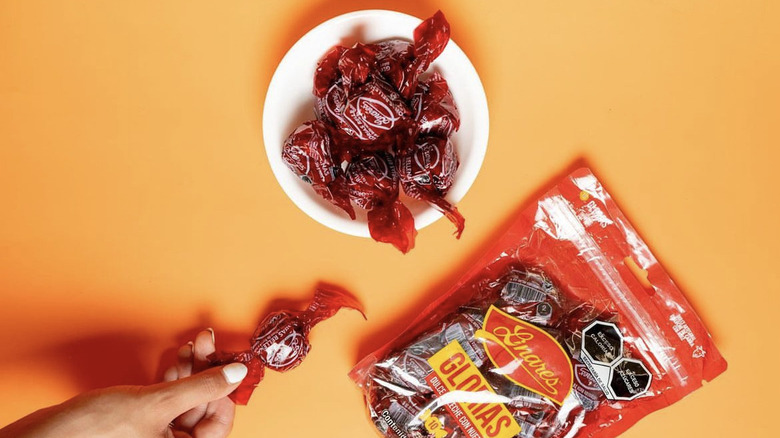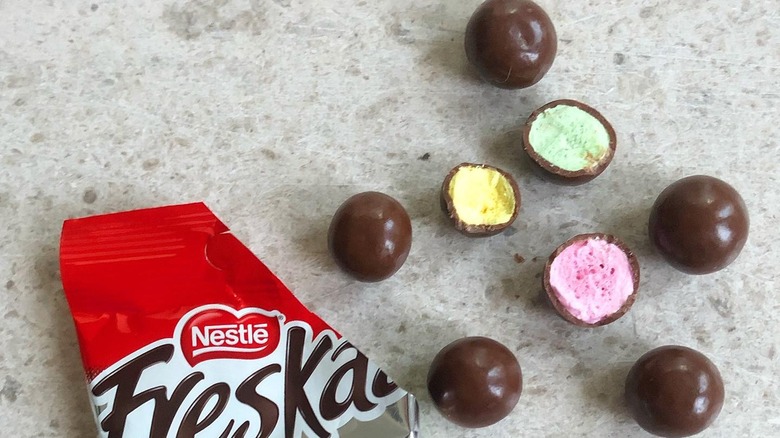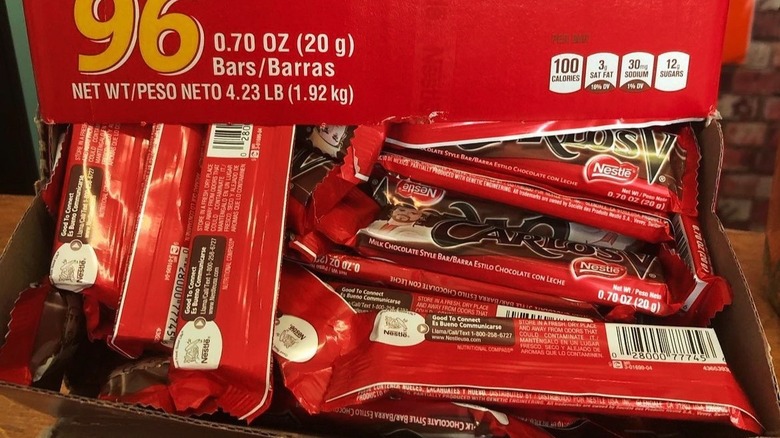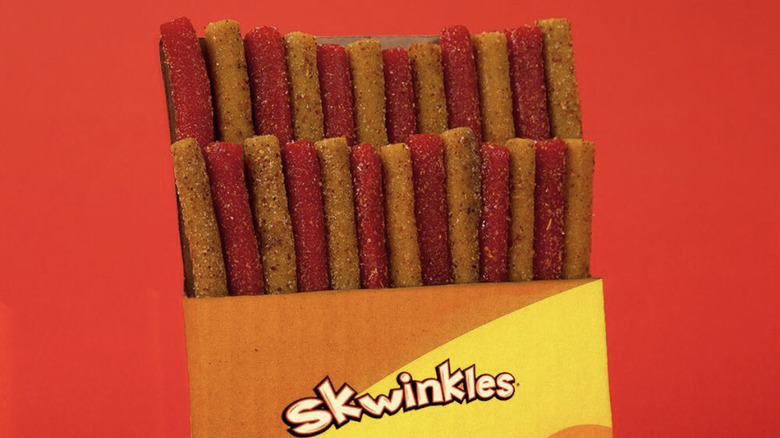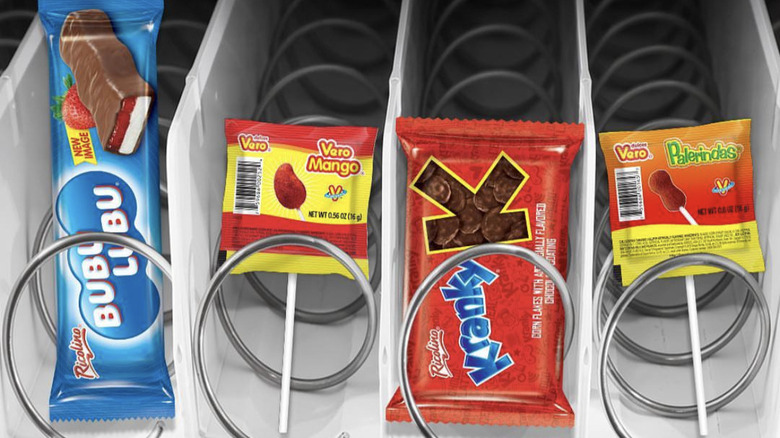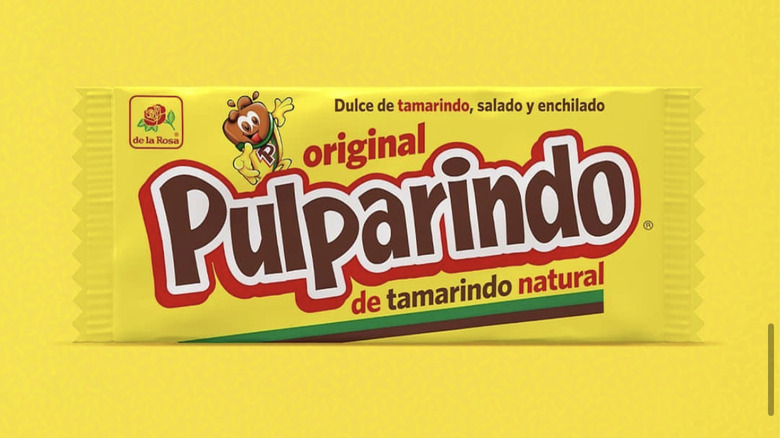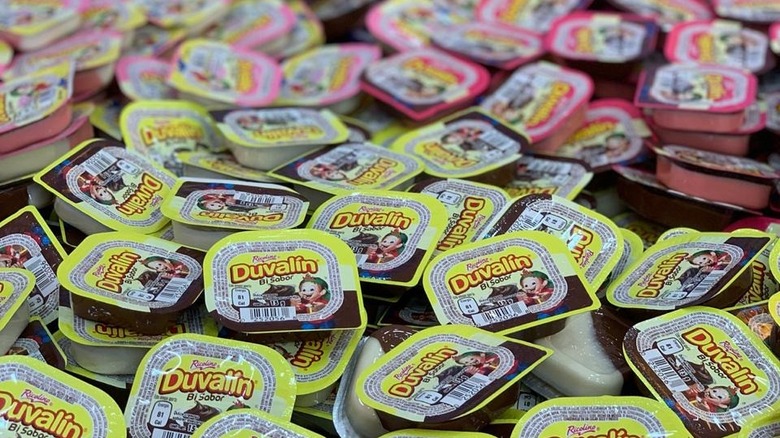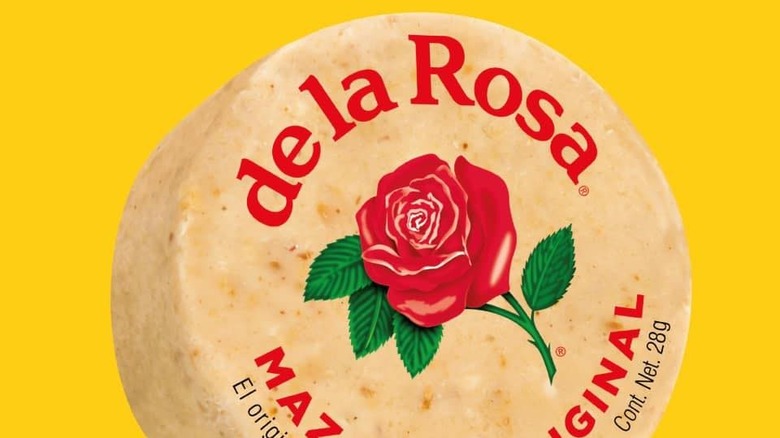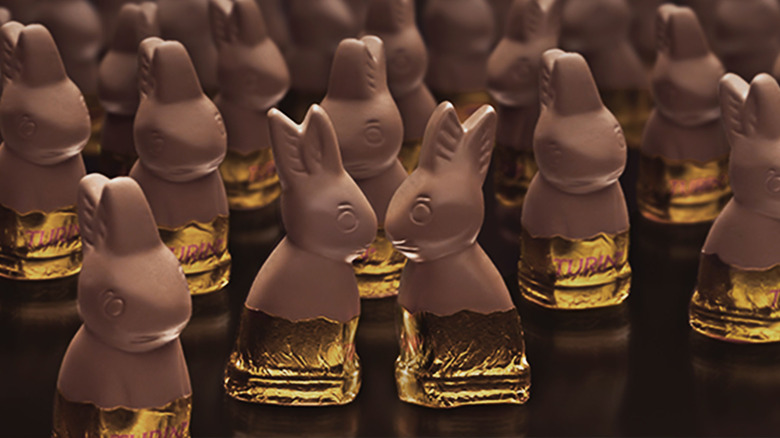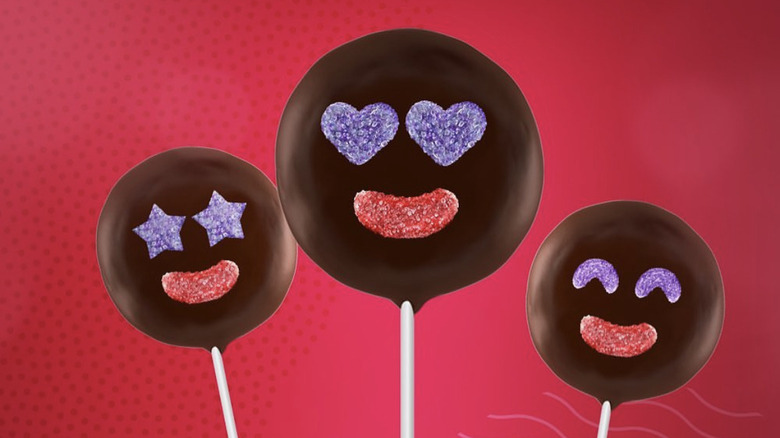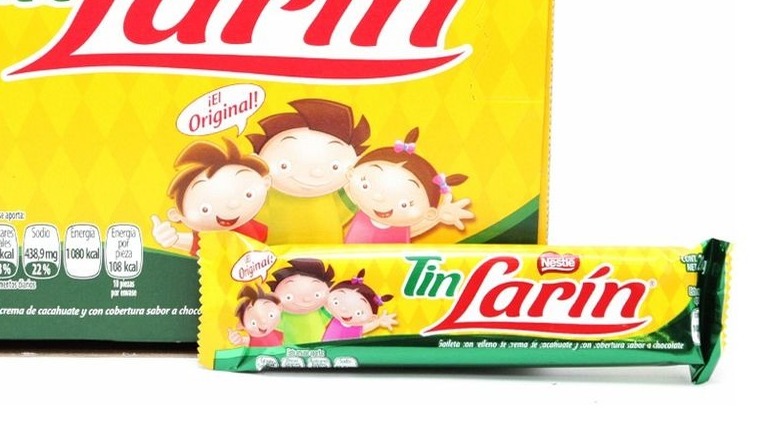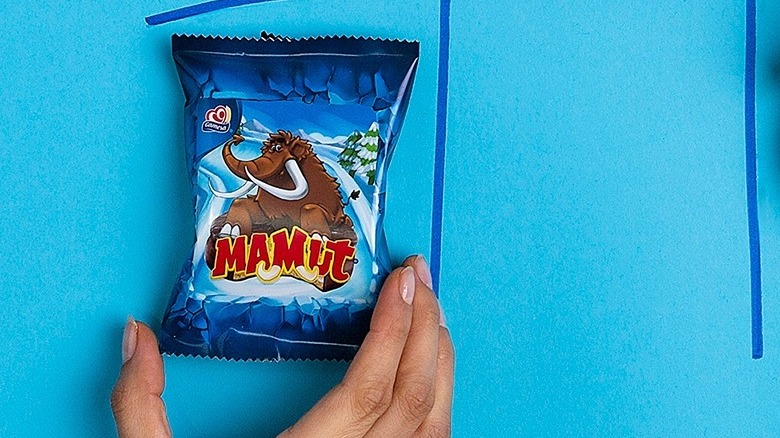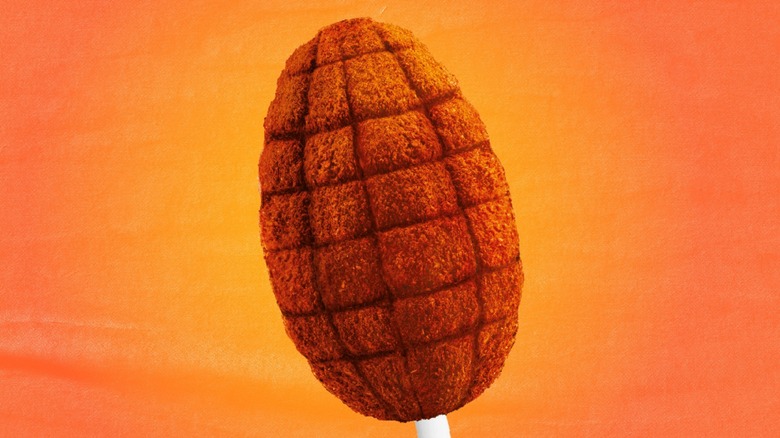14 Mexican Candies You Should Try At Least Once
Mexico's rich, fascinating culinary tradition dates back centuries, with recipes and techniques that date back to pre-Hispanic times and are still alive today. Mexican sweets are part of this culture, especially chocolate, as cacao originated in Mexico and was considered a sacred ingredient among cultures like the Maya.
While some of the country's most delicious sweets are artisanal and traditional — think of the coconut or tamarind candies you've spotted at souvenir shops in places like Los Cabos — others are good old store-bought candy. Found in supermarkets, convenience stores, street stands, and subway stations, these tasty treats are as popular as they are consistent. Many of them have survived the passing of time, changing trends, and even major company mergers. Most of Mexico's star sweets are available in the United States at grocery stores or specialty websites, and we've chosen 14 items that you need to taste at least once.
Cajeta-filled Wafers
A popular snack all over Mexico and other countries in Latin America, wafers have a sacred origin. Wafers are made with wheat flour, water, sugar, eggs, and vegetable oil, and their origins can be traced back to European convents. Later, they arrived in Mexico in the form of consecrated wafers during the Spanish conquest. Cheap and easy to make, it's no wonder that they quickly became a beloved treat. People started experimenting with stuffings such as honey and cajeta (caramel made with goat milk), elevating the humble wafer into a delicious dessert.
It's easy to find cajeta-filled wafers (obleas con cajeta in Spanish) in old-school candy stores or stands all over the country, as well as brand-name versions such as Las Sevillanas and Linares. Pocket-sized cajeta-filled wafers are an ideal little snack or dessert. The cajeta brings gooey sweetness, while the neutral-flavored wafer keeps things in balance.
Glorias
Take one bite of these dulce de leche-based classics, and you'll understand why they are named Glorias (glory). Officially known as Glorias de Linares, they get their name from their birthplace: the town of Linares, Nuevo León. Nuevo León is located in Northern Mexico, and the region has a longstanding tradition of goat milk-made candy, as milk over-production forced people to think of creative ways to preserve it.
History tells us that candy makers Melesio Pérez and Natalia Medina were suppliers for large dulce de leche sweets in the region and wanted to expand the business. Natalia made small, round pieces of dulce de leche candy, covered them in pecans, and wrapped them in red cellophane. As for the name, there are two theories: one states that she named the sweet after her granddaughter Gloria, and the other says that one of her customers tried the candy and said it tasted like glory. Let's go for theory #2. A staple in Mexican candy stores and airports, Glorias is the ideal souvenir. You can find traditional versions or brand-name Glorias from companies like Las Sevillanas and Linares.
Freskas
At first glance, Freskas might look like your run-of-the-mill ball-shaped chocolates. However, once bite into one, you will quickly realize it has a colorful, creamy, and slightly tangy filling inside. Freskas begin with fluffy caramel in three flavors: strawberry, pineapple, and lime. The caramel is covered in milk chocolate. Although some people are not exactly fans of the neon filling and artificial flavoring, Freskas (owned by Nestlé since 1995) have a fun hint of '90s nostalgia.
Since the brand's launch in the early nineties, the brightly-colored caramel fillings have been marketed as perfect for playing different games among friends. Think truth-or-dare or fortune-telling games along the lines of: "Pink means he likes you, green means he doesn't." Today, the brand's tagline is Juégatela con Freskas (take a gamble). It's no surprise that the most recent Freskas launch was a Barbie-themed bag. There are no surprises here: The bags are full of all-pink chocolate treats.
Carlos V
For more than 75 years, Carlos V has been an icon among Mexican sweets. Named after Spanish emperor Charles V, it is aptly marketed as "the king of chocolates." The story of Carlos V starts in the city of Xalapa, Veracruz, where it was produced by Fábrica de Chocolates La Azteca. Founded in 1919, La Azteca created other beloved chocolate products, such as Tin Larín and Chocolate Abuelita. In 1930, La Azteca arrived in Mexico City, where it grew in prestige and popularity. Nestlé purchased the factory in 1995 yet maintained the original recipe for the most part.
With Nestlé's most recent adjustment, Carlos V now includes at least 20% of Mexican cacao, the result of an initiative by Nestlé to support local cacao producers. Aside from the original Carlos V milk chocolate bar, you can find sugar-free, cookies-and-cream, and peanuts versions, as well as a small Carlos V stick and a chocolate-covered cookie wafer. If you're lucky, you can come across powdered Carlos V to make chocolate milk and Carlos V creamsicles, a treat for hot summer days.
Skwinkles
Mexicans have a taste for all things spicy and sour. Skwinkles, chewy, straw-shaped gummies, are the perfect fix to that craving. The name Skwinkles is a playful twist on the word escuincle, which is Mexican slang for child or kid. The sweets are quite playful as well and come in several versions. You can start with Skwinkles Clásicos, available in mango-chamoy flavor and covered with powdered chili, or perhaps Skwinkles Rellenos, pineapple-flavored gummies stuffed with tamarind-flavored pulp.
If you want a more consistent bite, go for the Skwinklote, a thick pineapple gummy filled with tamarind. And if you're in the mood for a saucier snack, we recommend the Skwinkles Salsagheti. These thin noodles come in mango or watermelon flavors and include a pack of hot sauce to bring the heat. Currently owned by Mars Wrigley, Skwinkles thrives on quirkiness. In fact, the brand's Facebook page suggests all sorts of odd combos, like mixing Skwinkles in your popcorn or with your veggies. Why not? The escuincle in you approves.
Kranky
There are few combinations as great as chocolatey and crunchy, as proven by chocolate-covered cornflakes. Sure, this is a treat you can buy at your local grocery store or even make at home, but Kranky comes in a convenient little red bag. Simple yet delicious and quite addictive, Kranky is practically candy royalty. It was created under the legendary Ricolino brand, founded in 1970 by Mexican businessmen Roberto and Lorenzo Servitje. Looking to expand their bread-making mega-conglomerate, Grupo Bimbo, the Servitje men launched Ricolino, bringing other iconic candy such as the clown-faced Paleta Payaso. After decades of success, Grupo Bimbo sold Ricolino to Mondelez International for $1.3 billion dollars in 2022. Mondelez also owns brands like Oreo, Cadbury, and Toblerone.
Some die-hard fans were sad to learn that Kranky would no longer be a 100% Mexican brand, but anyone who grew up munching on Kranky knows that it remains a national treasure. Pro tip: Sprinkle them on your ice cream or mix them with popcorn for a sweet-and-savory movie snack.
Pulparindo
If you watched the 2023 Golden Globes, you might have seen that Mexican actress Salma Hayek was smart enough to bring her own snacks. One of the treats she was carrying was Pulparindo, one of the most beloved sweets in the country. Made from tamarind pulp, sugar, and powdered chili, this thin, chewy bar comes in an iconic yellow wrapper. Mexican candy company De La Rosa, also responsible for the ubiquitous mazapán, is to thank for this delight.
De La Rosa started as a homemade candy company in 1942, thanks to Don Jesús Michel González and his family. Today, it remains a proudly Mexican company and has three production plants across the country. Pulparindo is produced at De La Rosa's factory in the state of Jalisco and is a staple at any convenience store or schoolyard. Aside from the classic bar, you can also enjoy other versions, such as Watermelon or Extra Spicy.
Duvalín
The best way to describe Duvalín is to think of a miniature, creamy pudding, perhaps inspired by Neapolitan ice cream. The sweet spread, featuring chocolate, vanilla, and strawberry-flavored stripes, has quite the history. A brand called Lausa (Laboratorios y Agencias Unidas) was the first one to produce the treat, followed by JoyCo. In 2004, Grupo Bimbo purchased JoyCo and incorporated Duvalín into its Ricolino sweets portfolio. Last year, Mondelez International purchased Ricolino and is now the proud owner of this popular product.
Interestingly, Duvalín's popularity is partly linked to En Familia con Chabelo, a legendary TV show that aired in Mexico every Sunday morning for 40 uninterrupted years. Hosted by the late Xavier López "Chabelo," the game show's prizes famously included a supply of Ricolino candy, which featured the beloved Duvalín. After all these years, Duvalín is still an icon among Mexican candy. Aside from the tri-flavored version, you can find vanilla-strawberry or vanilla-chocolate combos, all of which come with a tiny little spoon.
Mazapán De la Rosa
Sweet, crumbly, and creamy, mazapán is one of Mexico's most iconic sweets. While you can find artisanal mazapán in traditional candy stores all over the country, no mazapán is as easily recognizable as the one produced by De La Rosa presented in a clear plastic wrapper with the brand's logo: a red rose. History tells us that this icon was born in the fifties, when Elvira Velasco and Jesús Michel opened their Mexican candy store, Conitas, in Guadalajara. Inspired by traditional Spanish almond marzipans, they created their local version, switching the almonds for peanuts and ditching the egg. A few years later, they decided to change the name from Mazapán Conitas to Mazapán De La Rosa, as Guadalajara's marketing campaign at the time nicknamed it Ciudad de las Rosas (city of roses). Later, the couple made De La Rosa the official name for their entire operation.
Mazapán De La Rosa's popularity took over the country. Today, you can buy it essentially anywhere – from airport shops to corner stores to street vendors. Mazapán De La Rosa has gotten so big that it broke a record – literally. In 2018, the company created an 18,289-lb masterpiece, breaking the Guinness Record for the World's Largest Peanut Mazapán Candy. The endeavor required more than 100 people and 11 days to achieve, and the delicious result was shared among more than 10,000 people.
Conejito Turín
The origins of Conejitos Turín are tied to the tradition of eating chocolate eggs and bunnies around Easter, which started in the early nineteenth century. Mexican brand Turín, founded in 1928, created the milk chocolate Conejitos to take part in the Easter celebrations, and these cute bunnies became one of the brand's biggest stars. Now, as part of Mars Wrigley since 2016, Turín's Conejito nationwide distribution has grown from 2% to 10%, according to Expansión. You can also find a few Turin boutiques in Mexico, where you will most likely be welcomed by a giant Conejito.
Not only is a gold-wrapped bunny a perfect dessert to buy yourself at the supermarket check-out aisle, but it has also become a veritable phenomenon in Mexico. Over the past few years, brands, bakeries, and restaurants all over the country have launched Conejito-themed items, including cakes, cupcakes, creamsicles, and even a McFlurry. The endlessly Instagrammable treats are proof of the Conejitos' long-lasting popularity.
Paleta Payaso
Although Paleta Payaso (which translates as Clown Lollipop) seems like one of those sweets that have remained unchanged over the years, the fact is that it got its current look in the 1990s: A chocolate-covered marshmallow with blue gummy eyes and a red gummy smile. The first iteration of this lollipop was a chocolate-covered cornflake ball featuring a simple gummy smiley, created in 1972 by Ricolino, based in Mexico City. Just a year later, the brand ditched the cornflakes and opted for a now iconic fluffy ball of marshmallow and added three red gummies to give the clown a cheerful face.
Over its more than fifty years in the market, Paleta Payaso has been a flagship product for Ricolino, which is part of the Mondelez portfolio since 2022. Paleta Payaso is also a staple of Mexican pop culture, even inspiring countless memes — the sad Paleta Payaso is particularly popular.
Tin Larín
Sweet, crunchy, and super affordable, Tin Larín is a treat loved by chocolate fans of all ages across Mexico. This peanut butter-filled wafer cookie covered in chocolate comes in an unmistakable green-and-yellow wrapper, easy to spot at the grocery store when a craving hits.
As the name suggests, Tin Larín was created by Larín, one of the oldest and most prominent chocolate brands in Mexico. Founded in 1892 as Fábrica Modelo de Chocolates y Dulces Larín, the brand began its operations in Mexico City's San Rafael neighborhood. So relevant is Larín to Mexican culture that President Francisco I. Madero even authorized it to use his image in chocolate wrappers at the beginning of the Mexican Revolution. Eventually, the brand grew so much that it occupied half a block in the Polanco neighborhood. In 1988, Larín was purchased by Chocolates La Azteca, which in turn was bought by Nestlé in 1995.
Mamut
This layered delicacy features two crunchy vanilla cookies stuffed with a thick marshmallow and covered in chocolate. Some might say it's a commercial, low-brow twist on an Argentinian alfajor — two soft cookies stuffed with dulce de leche — but Mamut is a masterpiece all on its own. This treat is one of Gamesa's crown jewels. Founded in 1921 in Monterrey, Gamesa is a staple at Mexican food stores, creating iconic items such as Galletas Marías, Saladitas, and Chokis. In 1990, PepsiCo purchased Gamesa.
Mamut means mammoth, and the woolly animal has graced the wrapper for decades. The sweet also boasts one of the most memorable slogans in Mexican advertising: "para un apetito feroz" (for a ferocious appetite). So if you've got a ferocious craving, you know what to do. Even better, store it in the freezer for a couple of hours before you much on it. You'll thank us later.
Vero Lollipops
No Mexican kid's recess was complete without a Vero lollipop — at least for those growing up in the nineties. Vero's fun candy portfolio includes all sorts of themed lollipops, including an ear of corn and mango, both covered in chili powder, a fizzy beer, and a pink fortune-telling hand.
The popular brand was founded as Los Pinos in 1952 in Guadalajara by Ángel Ibarra, his wife María del Refugio, and their kids. After droughts affected the region, the family moved to Culiacán, where they changed the brand's name to Dulces Gloria. In 1964, Jorge, the eldest son, renamed the brand again. However, he called it Dulces Teresa this time and brought it back to Guadalajara. Finally, in the seventies, the brand got another woman's name, and this one stuck: Dulces Vero. Vero became a part of Grupo Bimbo in 2010 as part of the Ricolino portfolio, which was purchased by Mondelēz International in 2022.
